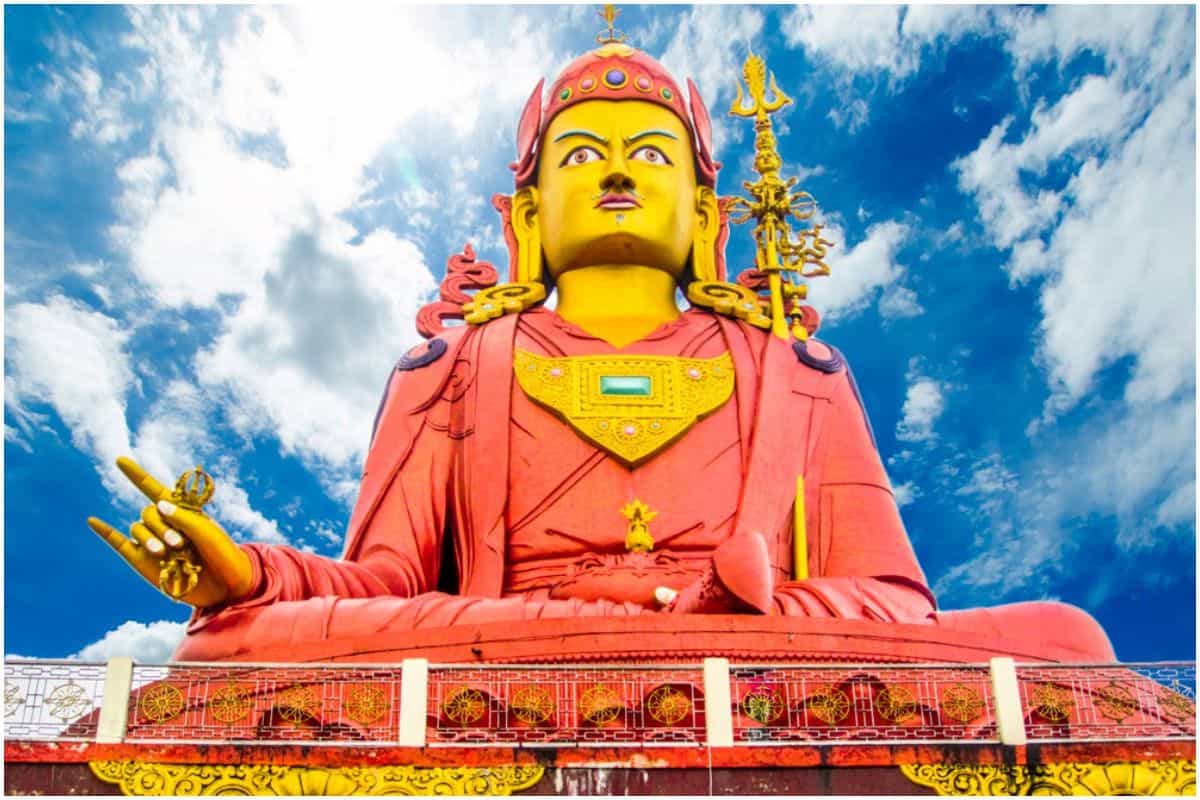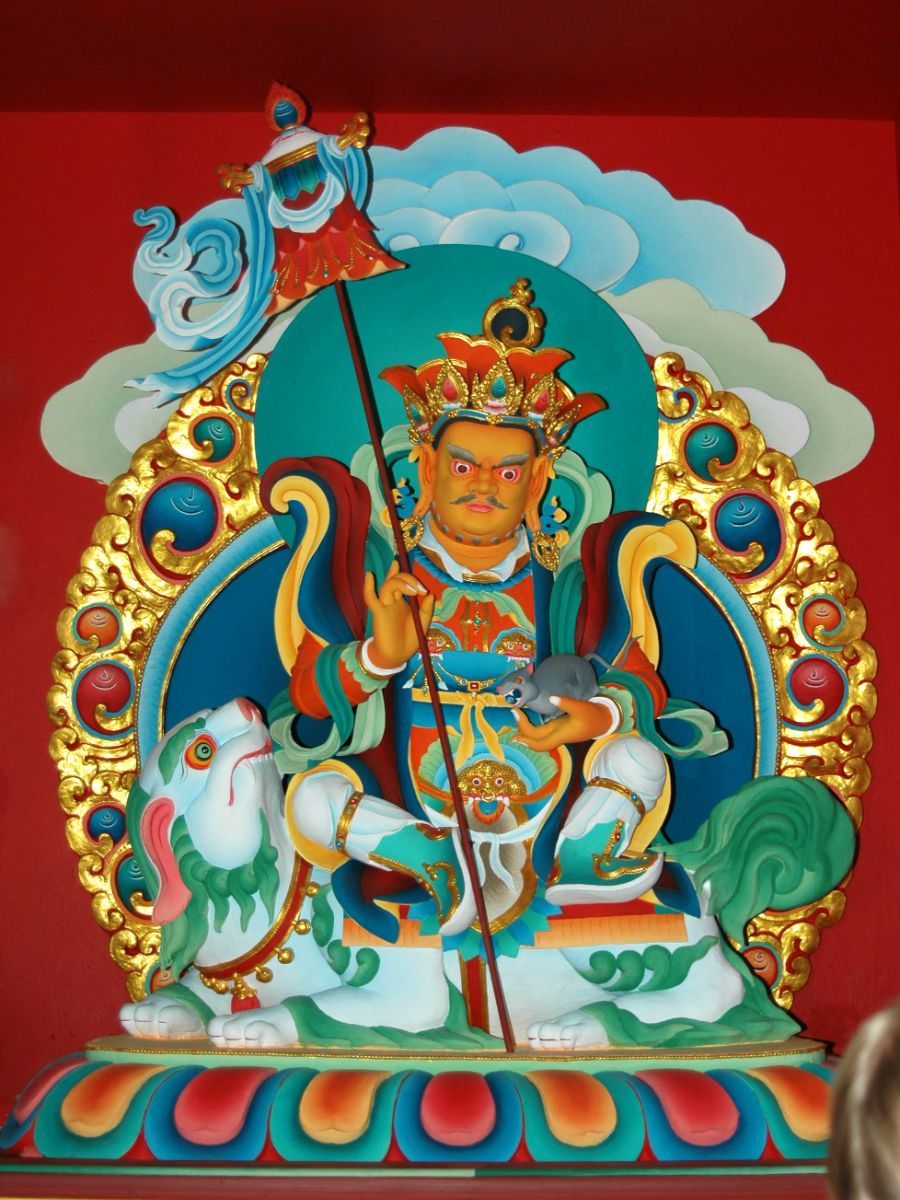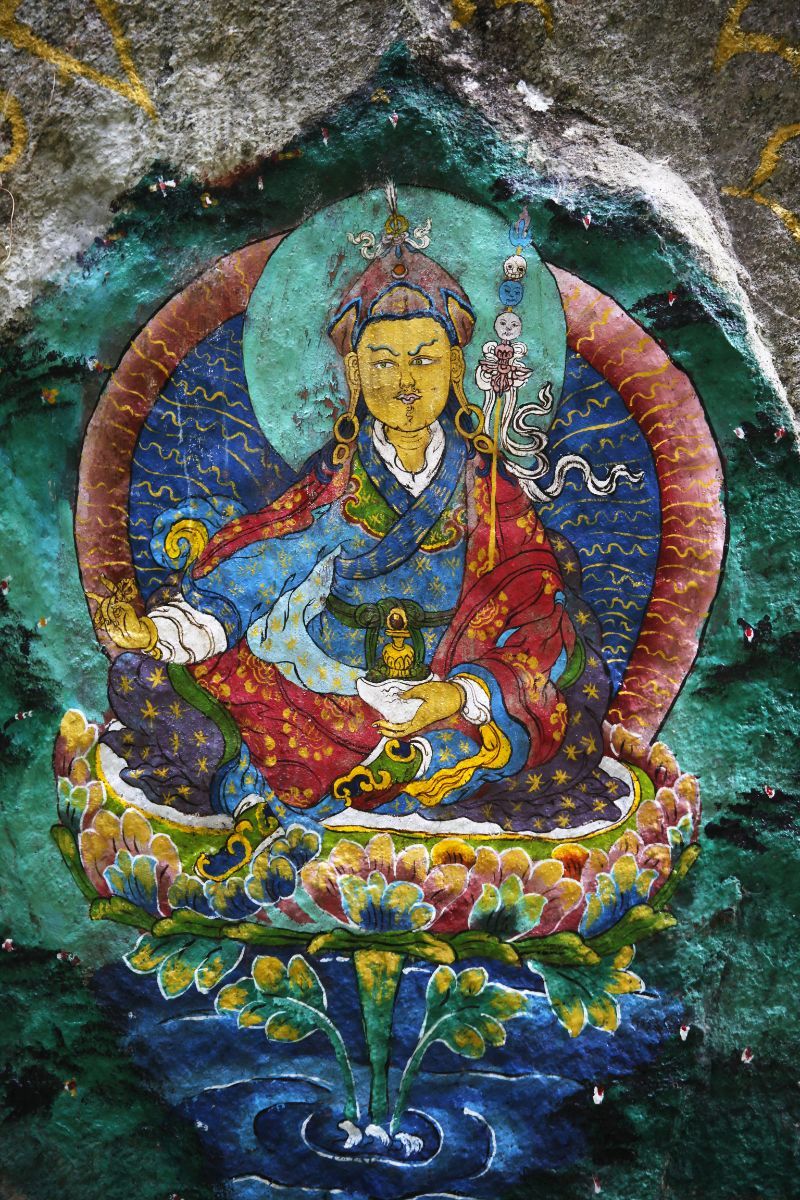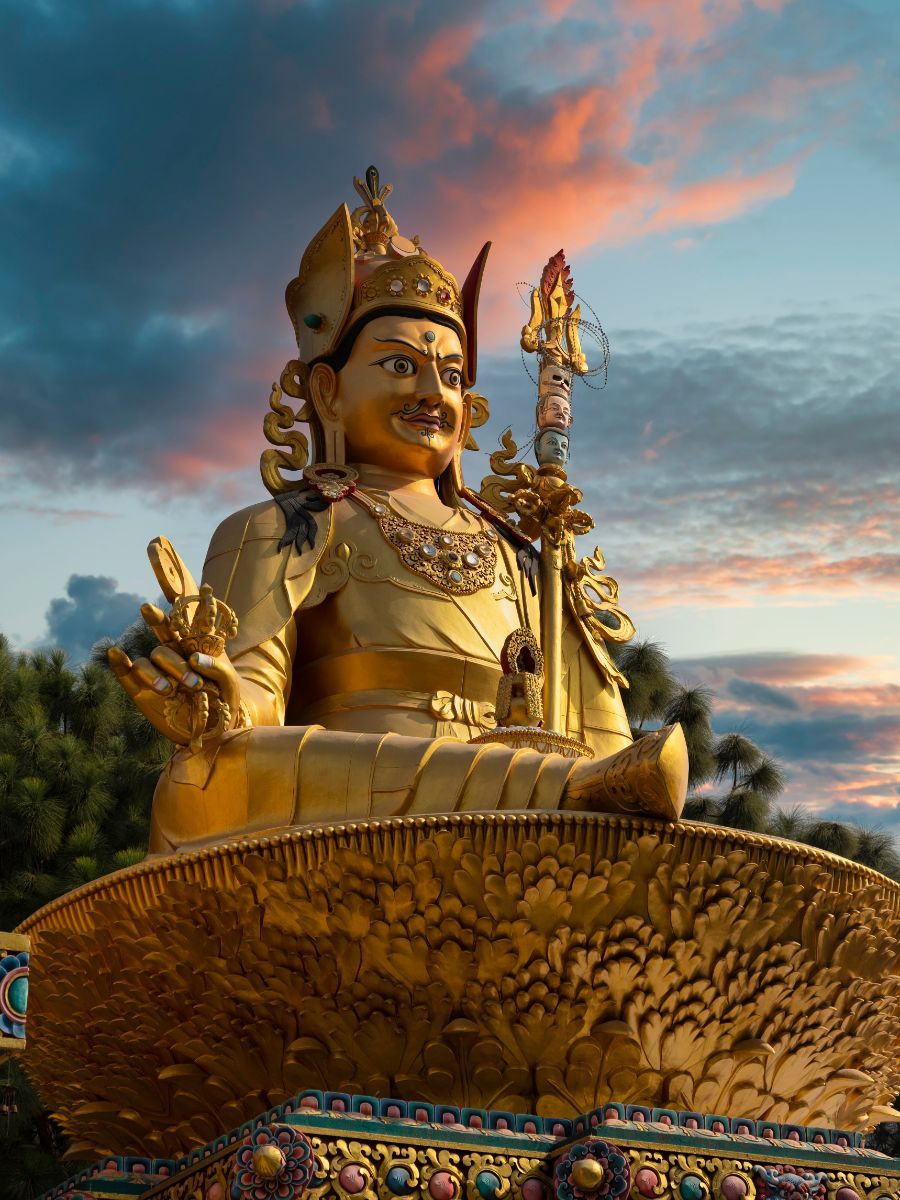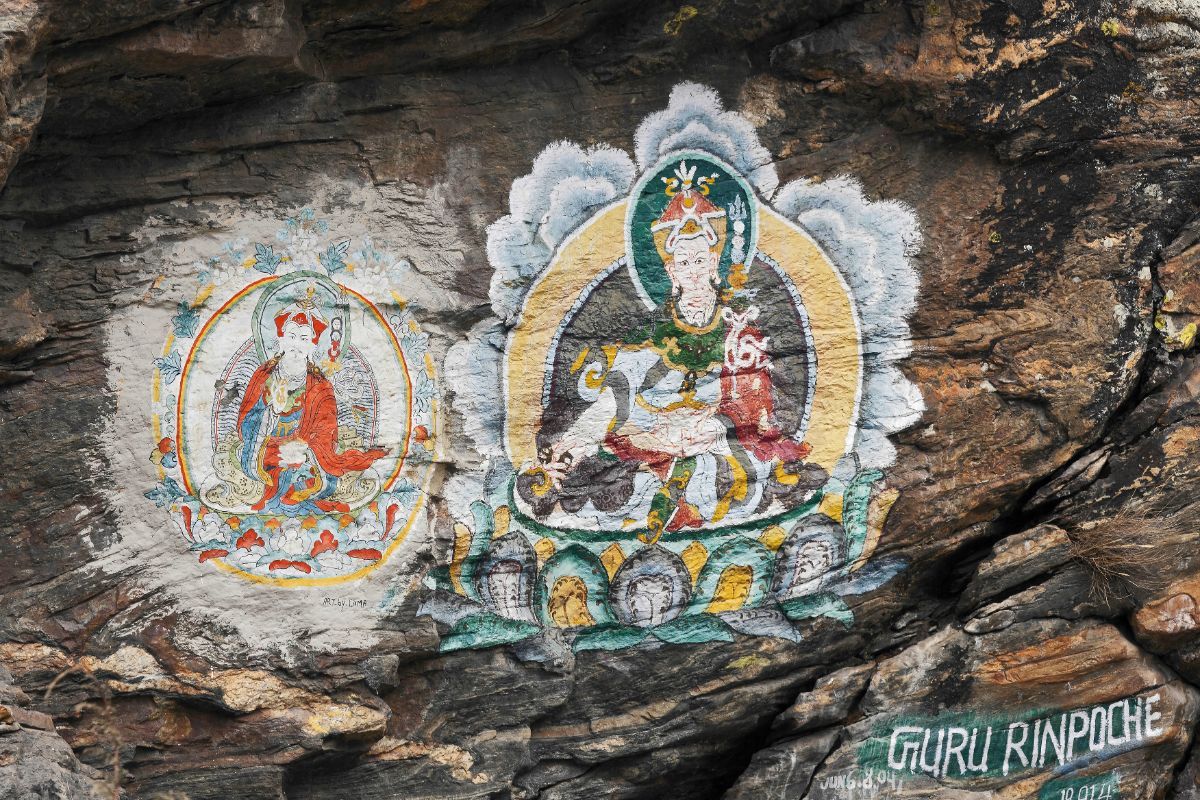What are the benefits and meanings of Om Ah Hum Vajra Guru Padma Siddhi Hum – Vajra Guru Mantra?
Introduction
Vajra Guru Mantra – Om Ah Hum Vajra Guru Padma Siddhi Hum is the mantra associated with Guru Rinpoche, also known as Padmasambhava.
The Vajra Guru mantra is pronounced by Tibetans: Om Ah Hung Benza Guru Pema Siddhi Hung.
Padmasambhava was a renowned teacher who is said to have converted Tibet to Buddhism.
He used his magical powers to subdue the demons of Tibet in order to allow Buddhism to take root there.
He was a well-known meditator, scholar, and magician, and his mantra suggests His rich and diverse nature.
A number of legends have grown around Guru Rinpoche’s life and deeds, and He is widely venerated as the ”second Buddha” across Bhutan, Tibet, Nepal, and the Himalayan states of India.
”The Vajra Guru Mantra is the essence of Padmasambhava. It is also Guru Rinpoche mantra of all the masters, yidams, buddhas, dakas, dakinis, and protectors. When you chant it, you are invoking the very embodiment of Padmasambhava.” – Sogyal Rinpoche
Vajra Guru Mantra mantra translation in English:
”I invoke you, Vajra Guru, Padmasambhava, by your blessing may you grant us supreme and ordinary realization.”
Guru Padmasambhava mantra meaning on syllables:
Om is usually considered as being the primeval sound and, in fact, the sound symbol of reality itself. This sound also represents the universal principle of enlightenment. Like many Sanskrit mantras, this one begins with “Om.” Om has no meaning, and its origins are lost in the mists of time.
Ah signifies the total unchanging perfection of dharmakaya, the three bodies of the Buddha.
Hum is commonly thought of as representing the manifestation of enlightenment in the individual human being.
Vajra signifies the thunderbolt and represents the energy of the enlightened mind. Vajra can also translate as ”diamond.”
Guru translates as ”wise teacher.” It comes from the Sanskrit root word, ”garu,” which translates as “weighty.” This syllable also corresponds to Avalokiteshvara, the Buddha of Compassion.
Padma signifies lotus, calling to mind the purity of the enlightened mind, due to the lotus flower, although growing in muddy water, is completely stainless. As Guru Rinpoche is the direct emanation of Buddha Amitabha, who is the primordial of the Lotus family, He is known as “PADMA.”
Siddhi signifies the accomplishment of supernatural powers, hinting at the way in which those who are enlightened can act wisely, but in ways that we can’t necessarily understand.
HUM signifies the wisdom mind and is the sacred catalyst of the mantra. It is like proclaiming its truth and power: “So be it!”
ALSO READ: Bodhisattva Vajrasattva Mantra: benefits & meaning
Chanting Om Ah Hum Vajra Guru Padma Siddhi Hum – Guru Rinpoche mantra benefits:
This mantra is said to be held in high esteem by sadhakas (individuals who follow spiritual practices; the word sadhakas can also be used to refer to spiritual initiates and aspirants) because of the powerful benefits encapsulated in the mantra.
“It is said that the 12 syllables mantra carries the entire blessing of the 12 types of teaching taught by Gautama Buddha, which is the essence of His 84000 Dharmas. So, to chant the mantra once is equivalent to the blessing of reciting … or practicing the whole teaching of the Gautama Buddha…
In these difficult times, just as there is no Buddha or refuge we can call upon who is more powerful than Guru Padmasambhava, therefore there is no mantra that is more fitting than this mantra.” – Dilgo Khyentse Rinpoche
”If one chants the mantra a thousand or ten thousand times daily, one is able to literally overwhelm others with one’s brilliance, in the sense of becoming very influential and charismatic in exerting a positive influence over others, and one will gain the unhindered force of blessings and spiritual power.
If one chants the Padmasambhava mantra 3 or 7 million times, one is never separate from the Buddhas of the 3 times and one becomes inseparable from me. All the demons and gods of existence will attend to one and offer their praises.” – Yeshe Tsogyal
“For this sadhana, it is commonly said that one should chant the mantra 1,200,000 times.
If we can accomplish these 1,200,000 recitations, it is said that we will receive the blessing of the Guru. It is also said, “With ten million siddhis, you will reborn in a place of vidyadharas.”
By chanting the mantra 10 million times you will reach the stage from which you can never turn back. So the benefits of chanting the mantra are truly inconceivable.” – Trulshik Rinpoche
Note
Guru Padmasambhava made a commitment to physically visit anyone who chanted his mantra every 10th day of the waxing moon.
Whether you can see Padmasambhava or not depends on your level of obscuration.
Image credit – RAKESH DUTTA/Shutterstock
READ MORE: Om Asatoma Sadgamaya – Pavamana Mantra Meaning
- About the Author
- Latest Posts
Irina is a co-founder and author at AwakeningState.com, an online magazine launched in 2016 that aims to expand consciousness every day. Offering eye-opening articles on a range of topics, Irina strives to provide unique insights into personal growth, covering areas such as spiritual awakening, health, lifestyle, nature, and science.
